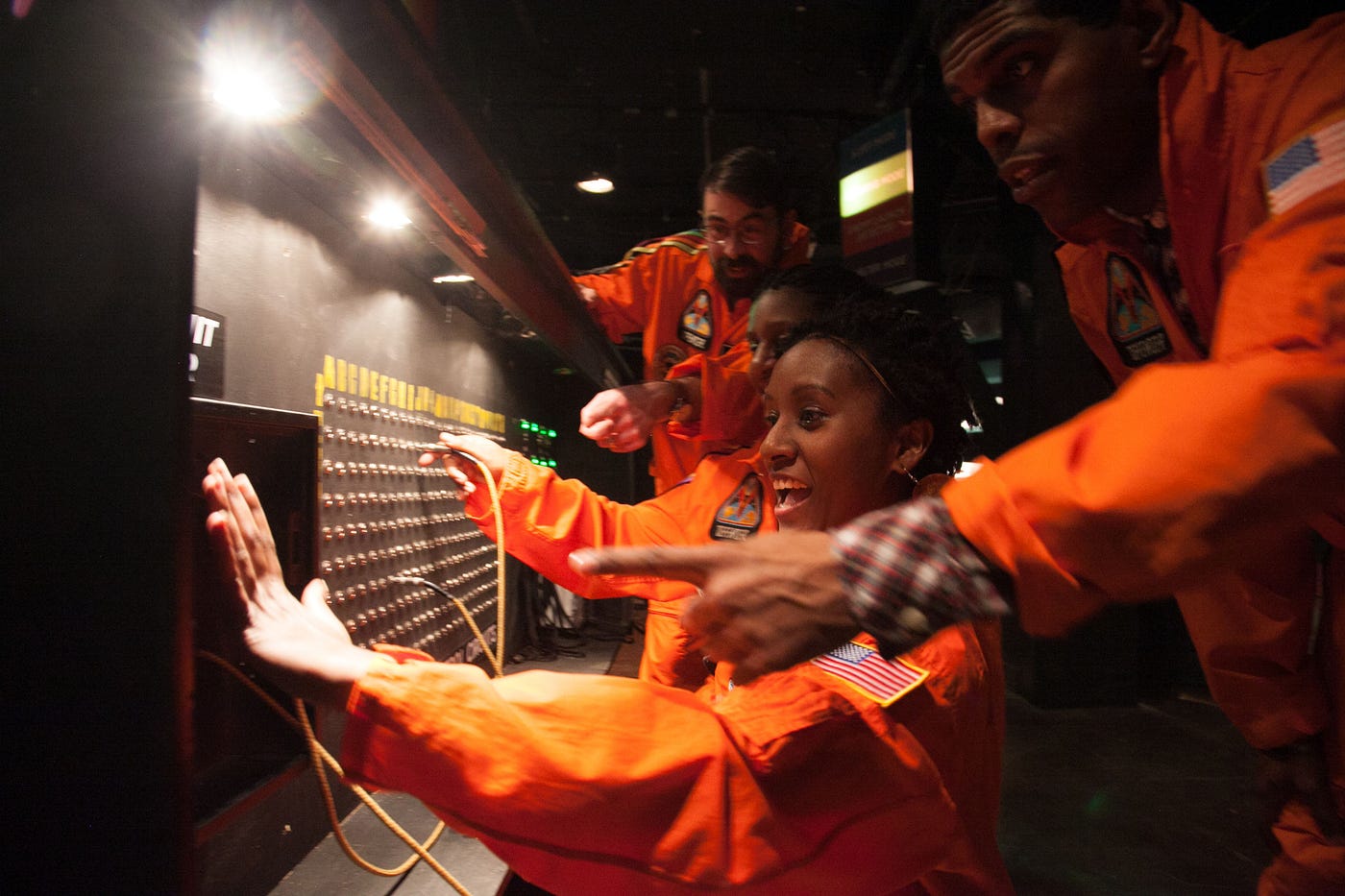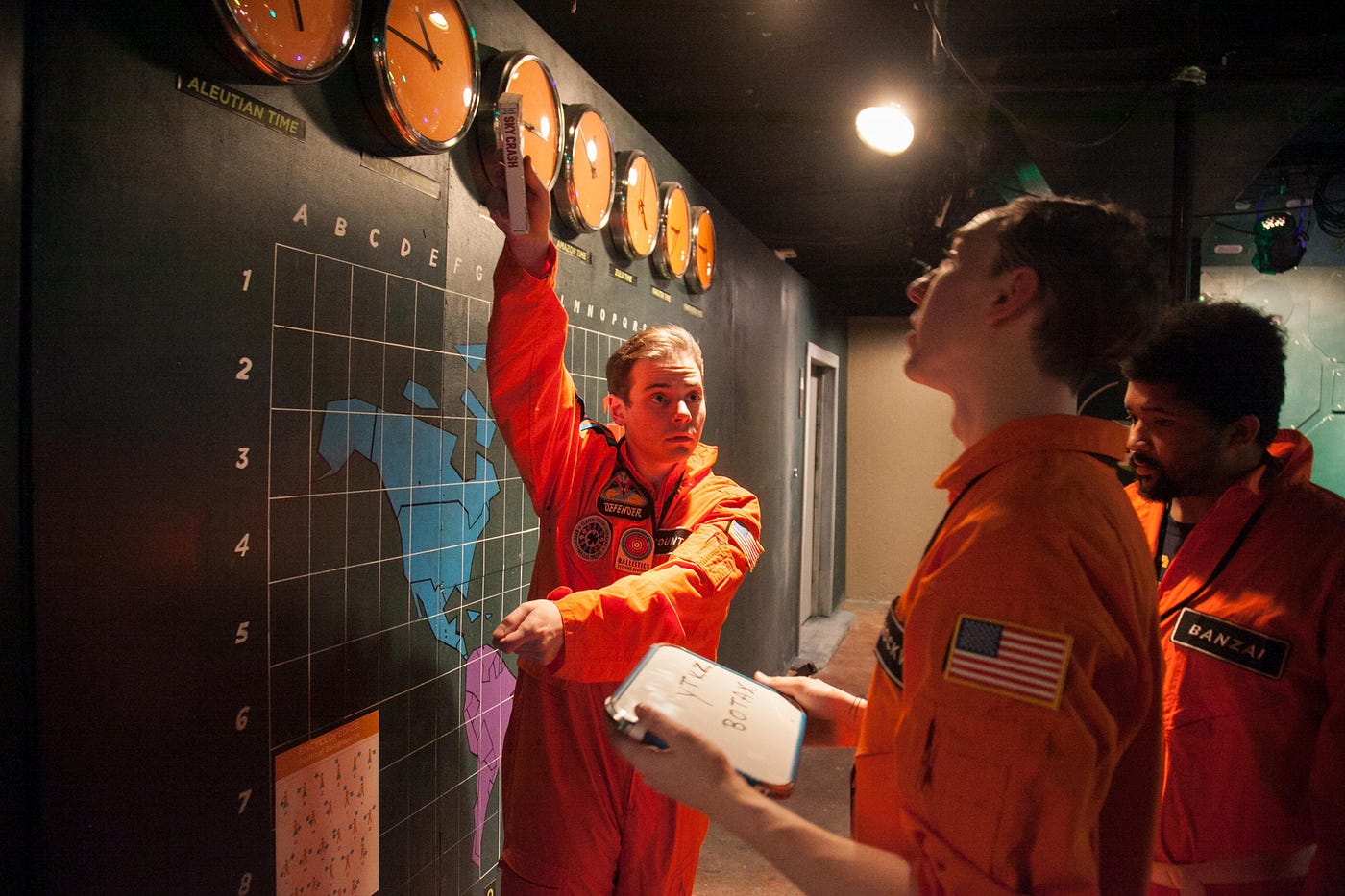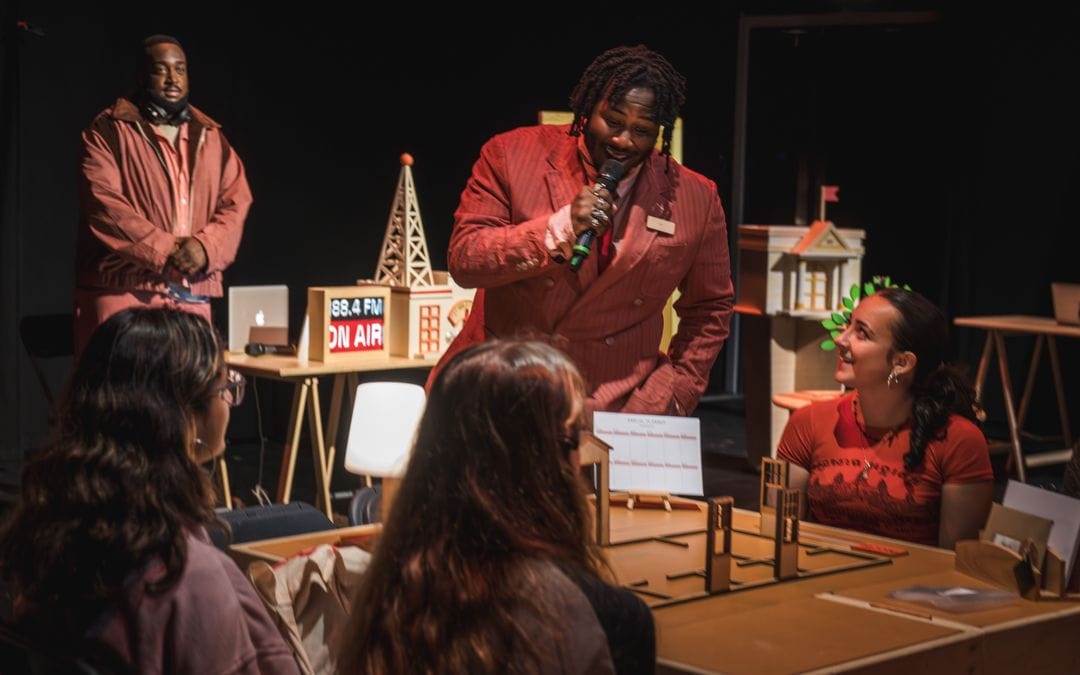
This summer, The Denver Center’s Off-Center program will bring live action game The Last Defender to Colorado audiences from Chicago. The production places attendees in the world of a 1980s-era nuclear control center, with orange jumpsuits included. In this retro-infused, participatory experience, players must work together as a group to solve puzzles, making sure to communicate as a team in order to save the world during the Cold War.
We spoke to writer/director Nathan Allen, game designer Sandor Weisz, and producer/curator Charlie Miller over email to learn more.
No Proscenium (NP): Can you tell us a little about yourself and your roles on this project?
Nathan Allen (NA): I am the Artistic Director of The House Theatre of Chicago and Writer/Director of The Last Defender.
Sandor Weisz (SW): I designed all the puzzles for The Last Defender and, together with Nathan, designed the gameplay.
Charlie Miller (CM): I am the Associate Artistic Director at the Denver Center and Curator of Off-Center and producer of The Last Defender.

NP: What, in a nutshell, is The Last Defender about?
The Last Defender is a part theatre, part puzzle solving, and part live action game experience where the players work together and communicate as a team to succeed and win.
It is not a play, but it is a crazy-awesome story about mutually assured destruction. This live action game makes the patron the hero. There will not be live actors in the room or an audience watching. Only players (patrons) and a few masked helpers to ensure a smooth experience. Patrons will work side-by-side with folks they know and strangers to solve puzzles and advance the story. They will play inside a fully designed Defender HQ, complete with a locker room, supercomputer, communications and information terminals, rec room, and more.
NP: Why did you create this experience? What inspired the team?

NA: I’ve always been interested in form and The House is known for experimenting with theatrical vocabularies. I’d long been frustrated with the narrative limits of some of the immersive experiences I’ve had. I always feel out of place and like I don’t know what I’m supposed to watch or follow. I wondered what would happen if we treated the audience more like protagonists of the story rather than witnesses to it. That initial question brought me to the game and puzzle mechanics that some of my friends were playing with in tabletop game design, and then to Sandy [Weisz].
SW: We built this just as escape rooms were becoming popular. We wanted to make something way different than what we were seeing the world of escape rooms. Something that made you the protagonist of your own game.
NP: What kinds of choices can the participants make in The Last Defender?
Get Kathryn Yu’s stories in your inbox
Join Medium for free to get updates from this writer.
SubscribeSubscribe
NA: Ultimately players will have to listen to their teammates and decide collectively which of the possible endings they should pursue. Each carries some narrative and moral consequence. That’s the big decision point, but along the way you’re constantly choosing your path through the game—figuring out how you can help and what you can contribute. You are completely in charge of your actions in the game and we’ve tried to scaffold the experience with interesting incentives that help you feel like you are contributing to the narrative.
NP: How are you designing around audience agency, consent, and safety?
CM: Because The Last Defender doesn’t involve any actors, the key is setting up the group of audience members to engage with each other and the game in a safe and productive way. The onboarding for this experience is deliberate and thorough, and there is a crew of four “black rabbits” as we call them that watch the action and offer hints or assistance when necessary. The team worked hard to design this experience to be fully ADA accessible, as we do for all Off-Center productions. And the crew and front-of-house team is trained in emergency procedures and ready to handle whatever unexpected things might happen.
SW: The game is way too big for any one player to see and play everything. In the second act, there are about a dozen things anyone person can tackle, and if they’re not done in parallel, a team won’t have any chance to win. So a player has to choose what they want to work on. The puzzles available range from very wordy to very visual, so there’s a lot of opportunity for a player to find the activity that suits them best. We also try really hard to let someone opt-in to an oversight role. I will say that the teams that do that are often the ones that succeed.
NP: What’s the audience response been like so far to The Last Defender?
NA: It’s been really moving to see groups of complete strangers end the game high-fiving and hugging each other, and then going to the bar together to plan their next attempt.
SW: Intense joy. Strangers who play the game together often will spend a long time in the lobby reviewing their game, or retiring together to a nearby bar. Players will come back several times so they can experience every element of the game.

NP: Who is the ideal audience member for this show? An immersive theatre fan? An escape room enthusiast?
NA: If it’s my ideal I’d say someone who thinks they wouldn’t like such a thing. That’s because I approached this whole project from that position myself. Really, its very gentle and welcoming and is meant to be accessible by anyone. We try to spend a lot of time and thought on accessibility so we can get as diverse and audience as possible to play together.
CM: I love how The Last Defender brings a random group of audience members together with a shared goal inside of a wonderful 8-bit world and Cold War-inspired story. It can be enjoyed by immersive theatre fans, escape room aficionados, video gamers, and anyone else who is up for the challenge. I think the ideal audience has a mix of folks with different interests — that group will have the most fun in the end.
NP: What do you hope participants take away from The Last Defender?
CM: Above all, I hope people have fun. We so rarely get the opportunity to play and to get lost inside of a story, and The Last Defender provides this. There is obviously deeper meaning to be found if you’re looking for it, but the primary goal is to get people working together and playing with a shared purpose.
NA: I hope people leave feeling a little better connected to their fellow Denverites!
The Last Defender runs May 28 — July 28. Tickets are $25.
NoPro is a labor of love made possible by our generous Patreon backers. Join them today!
In addition to the No Proscenium web site, our podcast, and our newsletters, you can find NoPro on Twitter, Facebook, YouTube, Instagram, in the Facebook community Everything Immersive, and on our Slack forum.
Office facilities provided by Thymele Arts, in Los Angeles, CA.




















Discussion